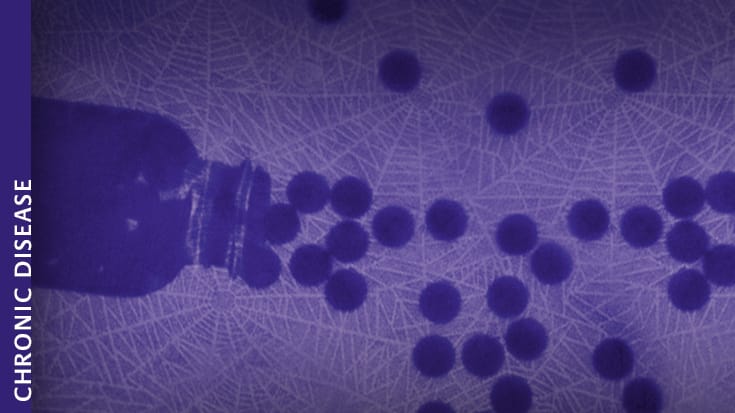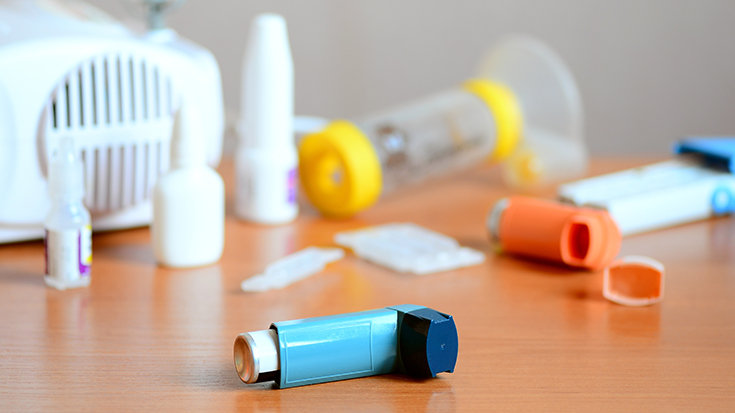
Introduction
We understand Chronic Obstructive Pulmonary Disease (COPD) to be significant health concern worldwide. More than 16 million people have been diagnosed with COPD in the United States alone.1 It is also estimated that millions more have COPD but are undiagnosed.1 Hospital admissions for acute exacerbations have been associated with increased resource utilization, as well as increased mortality.2
The COVID-19 pandemic caused great concern in patients diagnosed with chronic illnesses. The World Health Organization declared the mass spreading of the COVID-19 virus a pandemic on March 11, 2020.3 As of April 7, 2021, there have been 30,596,830 total cases of COVID-19 in the United States with total deaths reported at 554,420.4 It is crucial to discuss COPD as a comorbid condition for COVID-19 to gauge effective strategies regarding management and prevention. It is also essential to inform clinicians and providers to help them make evidence-based decisions on how to manage this population.
COPD as a Comorbid Condition for COVID-19
Poor lung reserve can lead to worsening outcomes for COPD patients diagnosed with COVID-19. COPD patients diagnosed with COVID-19 in China had a 2.6 times greater likelihood of being admitted to the intensive care unit and being placed on mechanical ventilation.5 The concern lies in the short-term and long-term effects of COVID-19 on the lungs, especially in COPD patients. An extensive systematic review showed that COVID-19 patients who also have underlying COPD have an increased odds of being hospitalized and admitted to the intensive care unit compared to COVID-19 patients without COPD.6 COPD patients diagnosed with COVID-19 also had higher mortality than patients with other conditions such as diabetes and hypertension.7
Pathophysiology of COVID-19 in COPD Patients
The underlying causes of COPD, such as smoking, can lead to increased susceptibility to respiratory infections.8 The role of adaptive immunity is also severely impaired in patients with COPD.8 A recent meta-analysis reported that patients with COPD were five times as likely to develop a severe COVID-19 infection.8,9 We can postulate that the impaired immune response in patients with COPD makes them more susceptible to increased risk of a severe infection related to the SARS-CoV-2 virus.
Management Strategies in COPD patients with COVID-19
Research is limited regarding whether the conventional management technique currently used to manage COPD should be altered in those patients with COVID-19. One concern is the use of corticosteroids. In other viral pandemics, the use of systemic corticosteroids delayed viral clearance.5 The use of dexamethasone in the RECOVERY trial performed in the U.K. showed a 33% reduction in mortality.5 These results promote the use of dexamethasone for COPD patients with COVID-19. Another area of concern is how the pandemic has altered patients’ ability to have face-to-face clinical visits.5 It has also impeded their ability to attend pulmonary rehabilitation sessions. One option for patients is to use telehealth. More research is needed to show the long-term value of this option for patients post-pandemic regarding overall patient outcomes and readmission rates.
Role of Telehealth
The COVID-19 pandemic caused COPD patients to find alternatives to traditional office visits and pulmonary rehabilitation sessions. With telehealth proving to be a viable option for these patients to provide optimal care, the hope is to continue presenting these telehealth options to patients as an alternative option to meet with their providers. Telehealth offers an essential level of access for patients to see providers. Research points to the benefits of telerehabilitation, health education, and self-management.10 The pandemic has forced clinicians to think outside the box regarding the management of COPD patients. Further research will identify the impact of telehealth on COPD patients during the pandemic.
Conclusion
The COVID-19 pandemic has placed a significant strain on the health care system. Patients with chronic diseases have had to seek alternative means of care. Furthermore, the concern of being exposed to the virus has altered how they routinely manage their diseases. It will be advantageous to look at the effects that the pandemic has had on COPD patients and quantify the role that COPD has played as a comorbid condition of COVID-19. As vaccinations become available to this population of patients, we hope this burden will lessen. The lessons learned during the COVID-19 pandemic will hopefully provide more options regarding the management of diseases, such as COPD, especially regarding the use of telehealth and other forms of technology.
References
- Hess DR, MacIntyre NR, Galvin WF, Mishoe SC. Respiratory Care: Principles and Practices 4th ed. Burlington MA: Jones and Bartlett Publishing; 2021:836.
- Piquet J, Chavaillon JM, David, P, Martin F, Blanchon F, Roche N. High-risk patients following hospitalisation for an acute exacerbation of COPD. Eur Respir J 2013; 42:946-955.
- dos Santos WG. Natural history of COVID-19 and current knowledge on treatment therapeutic options. Biomed. Pharmacol. J. 2020;129:1-19.
- COVID Data Tracker. Centers for Disease Control and Prevention, 2021, https://covid.cdc.gov/covid-data-tracker/#datatracker-home
- Leung JM, Niikura M., Cheng CWT, Sin DD. COVID-19 and COPD. Eur Respir J 2020; 56:1-9.
- Gerayeli FV, Milne S, Cheung C, Li X, Yang CWT, Tam A, Choi LH, Bae A, Sin DD. COPD and risk of poor outcomes in COVID-19: A systematic review and meta analysis. EClinicalMedicine 2021;33:1-12.
- Girardin JL, Seixas A, Cejudo JR, Osorio RS, Avirappattu G, Reid M, Parthasarathy S. Contributions of pulmonary diseases to COVID-19 mortality in a diverse urban community of New York. Chron Respir Dis 2021; 18:1-9.
- Olloquequi J. COVID-19 susceptibility in chronic obstructive pulmonary disease. Eur J Clin Invest 2020; 50(10).
- Deslee G, Zysman M, Burgel PR, Perez T, Boyer L, Gonzalez J, Roche N. Chronic obstructive pulmonary disease and the COVID-19 pandemic: Reciprocal challenges. Respir Med Res 2020; 78:1-4.
- Barbosa MT, Sousa CS, Morais-Almeida M, Simoes MJ, Mendes P. Telemedicine in COPD: An overview by topics. COPD 2020; 17(5):601-617.
Email newsroom@aarc.org with questions or comments, we’d love to hear from you.
















